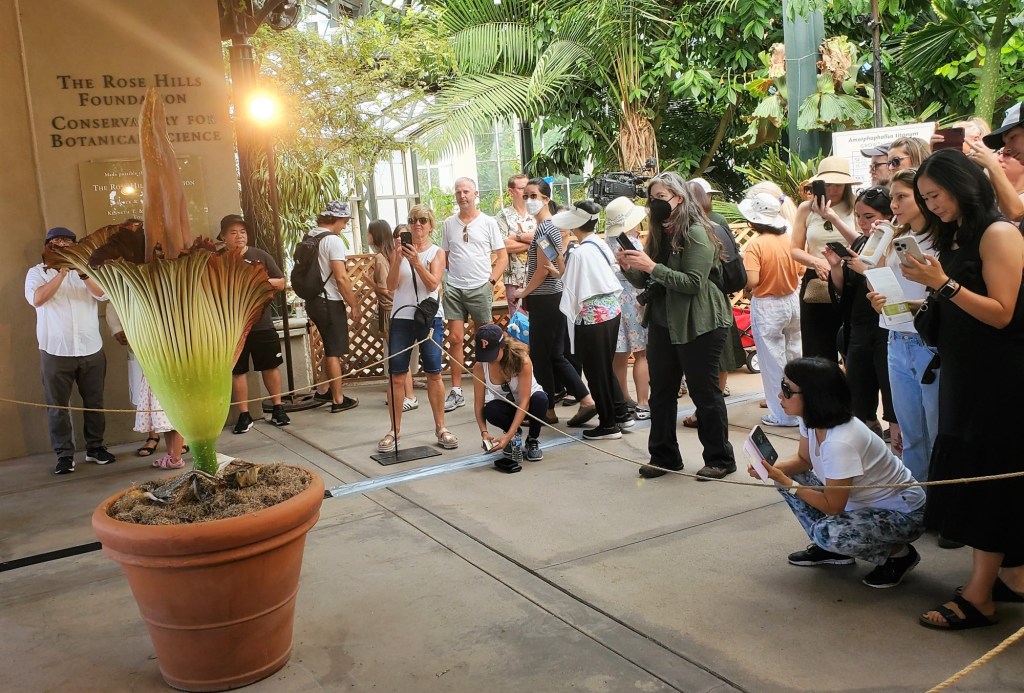How something so alive can smell so dead she’ll never know, but Jennifer Esqueda is so here for it.
The horticulture major from Orange Coast College missed work Monday to get a whiff and an eyeful of The Huntington’s corpse flower, which began blooming Sunday afternoon.
“I am really excited,” said Esqueda, 26, of Costa Mesa. “It’s a great experience to be able to see something like this. And the closest I can describe the smell to is a dead rat, and yes, I’ve smelled a dead rat.”
Esqueda visited The Huntington last week, hoping to catch the smelly unfurling. She said aside from lots of photos, she will also buy a t-shirt and pin from the bookstore to commemorate her successful expedition.
Brandon Tam, associate curator of the orchid collection, fielded questions from guests, explaining each plant takes 4-6 years to flower and that The Huntington has 43 mature specimens of the corpse flower, known formally as Amorphallus titanum or Allan the Amorphophallus to fans. The last corpse flower to bloom on premises was 2022’s Scent-tennial.
“It stinks, it blooms infrequently and it grows quickly, that’s why people are so fascinated and enticed by it,” Tam said.
The corpse flower can grow up to 8 feet tall and blooms for only about one to three days a year. It has been called the world’s largest flower.
The online bloom watch, live-streamed on YouTube and Instagram the past couple of weeks, brought longtime member Aaron Corder of Pasadena to the garden.
“I’ve been following on Instagram and geeking out about it, so I had to get down here and check it out,” Corder said. “I had to come and smell how potent it is.”
His verdict? An earnest and appreciative “Phew.”
Bryce Dunn, conservatory gardener, was the first to witness the corpse flower’s activity from its spot in the Rose Hills Foundation Conservatory. He said it was amazing how widely and quickly the plant head opened within hours.
As for the aroma, Dunn said the plant,…
Read the full article here







